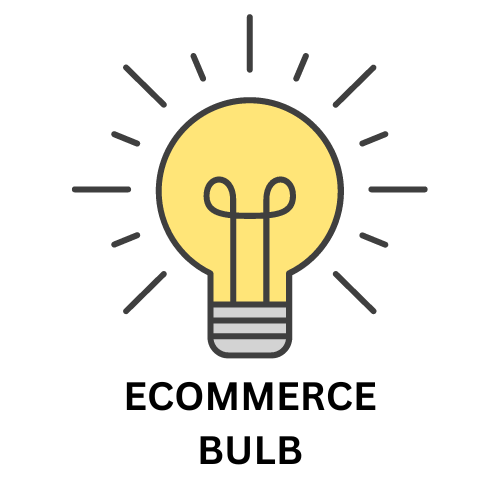In order to decide which ecommerce platform to use, WooCommerce vs Sellfy. A detailed comparison between features must be thoroughly done. If you want to decide which eCommerce platform to choose, there are many things to consider.
These are some examples of these factors:
- Cost.
- SEO friendliness.
- Page load speed.
- Canonical website URL.
- Indexing Control.
- Customizable HTML capabilities.
- Sitemap Generator.
- Integration with Google Analytics.
- Product Tagging and Categorization.
- Batch Uploading.
- Mobile Optimization.
- Built-in Blogging and Marketing Features.
- Social Sharing Buttons.
- Content Management Capabilities.
- Discount and promotion code tools.
- Easy to use Checkout.
- Reporting tools and custom reports.
- Integration of email marketing tools.
- Multiple payment options.
- Flexibility to add new eCommerce features.
- Exclusive features.
- Cons and pros.
Here we’ll discuss these factors to help you decide which platform is better for you, Sellfy or WooCommerce. And at the end of the discussion, we’ll recap and make a comparison for the scores of all these points to find out which eCommerce platform has the higher score, so that you’ll have a good view about both of them.
Read Further: Top 6 Sellfy Reviews
Pricing (WooCommerce Vs Sellfy):

Both Sellfy and WooCommerce offer different pricing tiers to cater to varying business needs and transaction volumes. Here’s a comparison of their pricing tiers:
Sellfy Pricing Tiers
- Start Plan: $19/month for up to 30 products, 1000 products sold, and $5000 in monthly sales
- Plus Plan: $29/month for up to 100 products, 3000 products sold, and $10,000 in monthly sales
- Business Plan: $49/month for up to 2500 products, unlimited products sold, and $50,000 in monthly sales
WooCommerce Pricing Tiers
- Free Plan: WooCommerce’s core software is free to download and use, but you’ll need to pay for hosting, domain registration, payment gateway fees, and optional extensions or themes
- WooCommerce Extensions: WooCommerce extensions can range in price from a few dollars to hundreds of dollars, depending on the extension’s functionality and provider
- WooCommerce Themes: WooCommerce themes can range in price from free to several hundred dollars, depending on the theme’s features and design
Additional Considerations
- Transaction Fees: Sellfy charges transaction fees for credit card payments, typically 2.9% + $0.30 per transaction. WooCommerce doesn’t charge transaction fees, but payment gateways like Stripe or PayPal will charge their own fees.
- Custom Development: If you need custom development or integrations, you’ll need to hire a developer or agency, which can add to the overall cost of using either platform.
- Scalability: As your business grows and your store’s traffic increases, you may need to upgrade your Sellfy plan or choose a more scalable eCommerce platform like WooCommerce.
Choosing the Right Platform
The choice between Sellfy and WooCommerce depends on your specific needs, budget, and business model. If you’re just starting out and have a small product catalog, Sellfy’s simple pricing and user-friendly interface can be a good option. If you have a larger product catalog and anticipate higher sales volume, WooCommerce offers more flexibility and scalability at a cost.
SEO Capabilities (Sellfy Vs WooCommerce):

Both Sellfy and WooCommerce offer SEO capabilities to help you optimize your eCommerce store for search engines and improve your visibility in search results. However, WooCommerce generally has a slight edge in terms of SEO capabilities, particularly for advanced SEO optimization.
Sellfy SEO Features
- Meta Tags and Descriptions: Sellfy allows you to add meta titles, descriptions, and keywords to your product pages and blog posts to improve their search engine rankings.
- Friendly URLs: Sellfy generates search engine friendly URLs for your product pages and blog posts.
- Image Alt Tags: Sellfy allows you to add alt tags to your product images to improve their visibility in image search results.
- Sitemap Generation: Sellfy automatically generates a sitemap that lists all of your store’s pages, making it easier for search engines to crawl your site.
- Social Media Integration: Sellfy integrates with social media platforms, allowing you to share your products and blog posts on social media to increase visibility and drive traffic to your store.
WooCommerce SEO Features
- Extensive Plugin Ecosystem: WooCommerce boasts a vast ecosystem of SEO plugins that extend its SEO capabilities. These plugins can provide features like schema markup, SEO optimization tools, and advanced analytics.
- Integration with Popular SEO Platforms: WooCommerce integrates seamlessly with popular SEO platforms like Yoast SEO and Rank Math, providing a comprehensive suite of SEO tools and optimization guidance.
- Customizable URL Structure: WooCommerce allows you to customize your product page URLs to make them more search engine friendly.
- Breadcrumbs and Internal Linking: WooCommerce supports breadcrumbs and internal linking, which can help search engines understand the structure of your site and navigate between your pages.
- Product Category SEO Optimization: WooCommerce allows you to optimize your product categories for search engines, improving their visibility for relevant search queries.
Comparison Summary
Both Sellfy and WooCommerce offer basic SEO features to optimize your eCommerce store for search engines. However, WooCommerce’s extensive plugin ecosystem, integration with popular SEO platforms, and advanced SEO optimization options provide a more comprehensive and powerful approach to SEO.
Choosing the Right Platform for SEO
The choice between Sellfy and WooCommerce for SEO depends on your specific SEO needs and expertise:
- If you prioritize basic SEO features and prefer a user-friendly interface, Sellfy’s SEO capabilities may be sufficient.
- If you prioritize advanced SEO optimization, customizability, and integration with SEO tools, WooCommerce might be a better fit.
PageLoad Speed (WooCommerce Vs Sellfy):

Both WooCommerce and Sellfy can provide good page load speeds for your eCommerce store, but WooCommerce generally has a slight edge in terms of page load optimization due to its flexibility and extensibility.
Factors Affecting Page Load Speed
Several factors can affect the page load speed of your eCommerce store, including:
- Hosting Provider: The performance of your hosting provider significantly impacts page load speed. Choose a reliable hosting provider with adequate resources to handle your store’s traffic and ensure fast loading times.
- Theme Optimization: The theme you choose for your store can also impact page load speed. Opt for a lightweight and optimized theme that minimizes code bloat and unnecessary elements.
- Image Optimization: Optimize your product images to reduce their file sizes without compromising quality. Use image compression techniques to reduce image size while maintaining visual clarity.
- Plugin Optimization: Carefully select and manage plugins on your store. Avoid using excessive plugins that can slow down your site.
Sellfy Page Load Speed
Sellfy generally provides good page load speeds out of the box, as it’s a hosted platform that manages the underlying infrastructure and optimizes its performance. However, you have limited control over server-side optimization or plugin selection.
WooCommerce Page Load Speed
WooCommerce, being a self-hosted platform, offers more flexibility and control over page load optimization. You can choose a high-performance hosting provider, optimize your theme, utilize caching plugins, and manage plugin usage to achieve faster loading times.
Comparison Summary
Both Sellfy and WooCommerce can provide good page load speeds, but WooCommerce offers more control and flexibility for optimizing page load performance. If you prioritize fine-grained optimization and the ability to leverage server-side caching and optimization techniques, WooCommerce might be a better fit.
Choosing the Right Platform for Page Load Speed
The choice between Sellfy and WooCommerce for page load speed depends on your technical expertise and priorities:
- If you prioritize ease of use and prefer a hosted platform with out-of-the-box optimization, Sellfy could be a suitable choice.
- If you prioritize fine-grained optimization, server-side caching, and control over performance optimization, WooCommerce might be a better fit.
Canonical Website URL (WooCommerce Vs Sellfy):

Both Sellfy and WooCommerce handle canonical website URLs effectively, ensuring that search engines recognize the primary version of each page on your eCommerce store.
Canonical URL Handling in Sellfy
Sellfy automatically generates canonical URLs for your product pages and blog posts, indicating the preferred URL for each page. This helps search engines avoid indexing duplicate content and ensures that your store’s primary version is recognized.
Canonical URL Handling in WooCommerce
WooCommerce also generates canonical URLs for your product pages and blog posts, and you have more granular control over canonical URL management. You can utilize plugins like Yoast SEO or Rank Math to fine-tune canonical URLs, especially for complex page structures.
Comparison Summary
Both Sellfy and WooCommerce effectively handle canonical website URLs, preventing duplicate content issues and ensuring that search engines recognize the primary version of each page on your eCommerce store. The choice between the two platforms depends on your specific needs and preferences.
Choosing the Right Platform for Canonical URLs
If you prioritize ease of use and prefer a self-hosted platform with out-of-the-box canonical URL generation, Sellfy could be a suitable choice.
If you prioritize granular control over canonical URL management and want to leverage advanced SEO plugins, WooCommerce might be a better fit.
Indexing Control (WooCommerce Vs Sellfy):

Both WooCommerce and Sellfy provide options for controlling how search engines index your eCommerce store’s pages. However, WooCommerce generally offers more flexibility and control over indexing, particularly for advanced indexing management.
Indexing Control in Sellfy
Sellfy offers basic indexing control options, allowing you to set the robots.txt file and use noindex meta tags on specific pages. This provides some control over which pages are indexed by search engines.
Indexing Control in WooCommerce
WooCommerce offers more granular control over indexing, primarily through plugins like Yoast SEO and Rank Math. These plugins allow you to manage indexing settings for individual pages, categories, and custom post types. You can also control indexable content based on user roles, meta fields, and other criteria.
Comparison Summary
Both Sellfy and WooCommerce provide options for controlling indexing, but WooCommerce offers more flexibility and advanced indexing management capabilities through plugins. The choice between the two platforms depends on your specific indexing needs and technical expertise.
Choosing the Right Platform for Indexing Control
If you prioritize ease of use and prefer a hosted platform with basic indexing control options, Sellfy could be a suitable choice.
If you prioritize advanced indexing management, granular control over indexable content, and the ability to leverage SEO plugins, WooCommerce might be a better fit.
Customizable HTML Capabilities (WooCommerce Vs Sellfy):

Both WooCommerce and Sellfy allow you to customize the HTML of your eCommerce store templates, but WooCommerce generally offers more flexibility and control over HTML customization due to its open-source nature and extensive plugin ecosystem.
Sellfy provides a limited degree of HTML customization through its theme editor, allowing you to modify basic elements like product descriptions and page titles. However, the customization options are restricted, and you have less control over the overall structure and styling of your store’s templates.
WooCommerce, on the other hand, offers extensive HTML customization capabilities. You can directly edit the HTML templates of your store’s theme, and you have access to a vast ecosystem of plugins that provide additional HTML customization options. This allows you to create highly customized store designs and tailor your templates to your specific needs.
Here’s a comparison of HTML customization capabilities for each platform:
| Feature | Sellfy | WooCommerce |
|---|---|---|
| Theme editor for basic HTML modifications | Yes | Yes |
| Direct access to edit theme templates | No | Yes |
| Plugin ecosystem for advanced HTML customization | Limited | Extensive |
| Control over overall template structure and styling | Limited | High |
If you prioritize ease of use and prefer a hosted platform with basic HTML customization options, Sellfy could be a suitable choice. However, if you prioritize extensive HTML customization, granular control over template design, and the ability to leverage plugins for advanced customization, WooCommerce might be a better fit.
Sitemap Generators (WooCommerce Vs Sellfy):

Both Sellfy and WooCommerce offer sitemap generation capabilities to help search engines crawl and index your eCommerce store’s pages effectively. However, WooCommerce generally offers more flexibility and advanced sitemap generation options compared to Sellfy.
Sitemap Generation in Sellfy
Sellfy automatically generates a sitemap that lists all of your store’s pages, including product pages, category pages, and blog posts. This sitemap is submitted to search engines to facilitate crawling and indexing.
Sitemap Generation in WooCommerce
WooCommerce also automatically generates a sitemap, but it provides more flexibility and control over sitemap generation. You can utilize plugins like Yoast SEO or Rank Math to customize your sitemap, including excluding specific pages, adding priority levels, and generating XML sitemaps for custom post types.
Comparison Summary
While both Sellfy and WooCommerce provide basic sitemap generation capabilities, WooCommerce offers more advanced options for customizing your sitemap and optimizing crawling for search engines.
Choosing the Right Platform for Sitemap Generation
If you prioritize ease of use and prefer a hosted platform with out-of-the-box sitemap generation, Sellfy could be an appropriate choice.
If you prioritize advanced sitemap customization, control over priority levels, and the ability to leverage SEO plugins for sitemap optimization, WooCommerce might be a better fit.
Integration With Google Analytics (WooCommerce Vs Sellfy):

Both WooCommerce and Sellfy offer integration with Google Analytics, allowing you to track website traffic, user behavior, and sales performance. However, WooCommerce generally offers more flexibility and advanced integration options compared to Sellfy.
Google Analytics Integration in Sellfy
Sellfy provides native integration with Google Analytics, enabling you to connect your store to your Google Analytics account and track basic website traffic and sales data. This integration is straightforward and doesn’t require any manual code setup.
Google Analytics Integration in WooCommerce
WooCommerce also offers native Google Analytics integration, but it provides more flexibility and control over the integration process. You can customize the tracking parameters, utilize enhanced e-commerce tracking, and integrate with Google Analytics plugins like MonsterInsights or WooCommerce Google Analytics.
Comparison Summary
While both Sellfy and WooCommerce offer basic Google Analytics integration, WooCommerce provides more advanced options for custom tracking, enhanced e-commerce tracking, and plugin integration.
Choosing the Right Platform for Google Analytics Integration
- If you prioritize ease of use and prefer a hosted platform with basic Google Analytics integration, Sellfy could be an appropriate choice.
- If you prioritize advanced tracking customization, enhanced e-commerce tracking, and the ability to leverage Google Analytics plugins for in-depth data analysis, WooCommerce might be a better fit.
Product Tagging and Categorization (WooCommerce Vs Sellfy):

Both WooCommerce and Sellfy offer product tagging and categorization functionalities to help you organize and manage your product catalog effectively. However, WooCommerce generally provides more flexibility and advanced options for product tagging and categorization.
Product tagging and categorization are essential for eCommerce stores to organize their product catalog, improve navigation, and enhance search functionality. Both WooCommerce and Sellfy offer these features to help you manage your product catalog effectively.
Here’s a comparison of product tagging and categorization capabilities for each platform:
| **Feature | Sellfy | WooCommerce |
|---|---|---|
| Product tags | Yes | Yes |
| Product categories | Yes | Yes |
| Customizable product taxonomies | Limited | Extensive |
| Hierarchical product categories | Yes | Yes |
| Product filtering and sorting | Basic | Advanced |
Sellfy’s Product Tagging and Categorization
Sellfy provides basic product tagging and categorization options, allowing you to assign tags and categories to your products. You can also create hierarchical categories to organize your product catalog further. However, Sellfy’s customization options for product taxonomies are limited.
WooCommerce’s Product Tagging and Categorization
WooCommerce offers more extensive and flexible product tagging and categorization capabilities. You can create custom product taxonomies, assign multiple tags and categories to products, and utilize advanced product filtering and sorting options. This allows you to organize your product catalog in a more granular and customizable way.
Comparison Summary
While both Sellfy and WooCommerce provide basic product tagging and categorization features, WooCommerce offers more flexibility and advanced options for customizing product taxonomies, hierarchical categorization, and product filtering.
Choosing the Right Platform for Product Tagging and Categorization
- If you prioritize ease of use and prefer a hosted platform with basic product tagging and categorization, Sellfy could be a suitable choice.
- If you prioritize advanced product taxonomy customization, hierarchical categorization, and granular product filtering, WooCommerce might be a better fit.
Batch Uploading (WooCommerce Vs Sellfy):

Both WooCommerce and Sellfy offer batch uploading capabilities to efficiently add multiple products to your eCommerce store. However, WooCommerce generally provides more robust and flexible batch uploading options compared to Sellfy.
Batch uploading is an essential feature for managing large product catalogs and quickly adding new products to your store. It saves time and effort compared to manually adding products one by one.
Here’s a comparison of batch uploading capabilities for each platform:
| Feature | Sellfy | WooCommerce |
|---|---|---|
| Batch uploading via CSV file | Yes | Yes |
| Customizable CSV file format | Limited | Extensive |
| Product image upload | Supported | Supported |
| Error reporting and validation | Basic | Advanced |
| Product attribute mapping | Limited | Extensive |
| Integration with third-party tools | Limited | Extensive |
Mobile Optimization (WooCommerce Vs Sellfy):

Both WooCommerce and Sellfy offer mobile optimization features to ensure your eCommerce store provides a seamless user experience on mobile devices. However, WooCommerce generally provides more flexibility and control over mobile optimization compared to Sellfy.
Mobile optimization is crucial for eCommerce stores, as a significant portion of online traffic comes from mobile devices. Both WooCommerce and Sellfy offer responsive themes and mobile-friendly designs to adapt your store’s layout and styling to different screen sizes.
Here’s a comparison of mobile optimization features for each platform:
| Feature | Sellfy | WooCommerce |
|---|---|---|
| Responsive themes | Yes | Yes |
| Mobile-friendly designs | Yes | Yes |
| Customizable mobile layouts | Limited | Extensive |
| Mobile checkout optimization | Basic | Advanced |
| Mobile performance optimization | Limited | Extensive |
| Integration with mobile-optimized plugins | Limited | Extensive |
Built-in Blogging & Marketing Features (WooCommerce Vs Sellfy):

Both WooCommerce and Sellfy offer built-in blogging and marketing features to help you promote your products and engage with your customers. However, WooCommerce generally provides more comprehensive and powerful blogging and marketing tools compared to Sellfy.
WooCommerce Blogging and Marketing Features
WooCommerce offers a robust set of built-in blogging and marketing features, including:
- Integrated blog platform: WooCommerce seamlessly integrates with WordPress, allowing you to create and manage a blog directly from your store’s backend.
- Email marketing integration: WooCommerce supports popular email marketing platforms like MailChimp and ActiveCampaign, enabling you to send automated email campaigns to your customers.
- Social media integration: WooCommerce integrates with various social media platforms, allowing you to share products and posts on social media and track your engagement.
- On-page SEO optimization: WooCommerce provides basic on-page SEO optimization features to help your store rank higher in search results.
- Analytics and reporting: WooCommerce offers basic analytics and reporting tools to track your store’s performance and customer behavior.
Sellfy Blogging and Marketing Features
Sellfy provides a more limited set of built-in blogging and marketing features, including:
- Basic blog integration: Sellfy allows you to create and manage blog posts, but the blog platform is less robust than WooCommerce’s integrated WordPress blog.
- Email marketing integration: Sellfy supports basic email marketing features, but it doesn’t integrate with third-party email marketing platforms as seamlessly as WooCommerce.
- Social media integration: Sellfy integrates with social media platforms, but it offers fewer social media marketing tools compared to WooCommerce.
- Limited SEO optimization: Sellfy provides basic SEO optimization features, but it lacks advanced SEO tools like WooCommerce’s schema markup and Yoast SEO integration.
- Basic analytics reporting: Sellfy offers basic analytics reporting to track your store’s performance, but its analytics tools are less comprehensive than WooCommerce’s.
Social Sharing Buttons Availability (WooCommerce Vs Sellfy):

Both WooCommerce and Sellfy offer social sharing buttons to enable customers to easily share your products and content on social media. However, WooCommerce generally provides more flexibility and customization options for social sharing buttons compared to Sellfy.
Social Sharing Buttons in Sellfy
Sellfy provides basic social sharing buttons for popular social media platforms like Facebook, Twitter, and Pinterest. These buttons are integrated into product pages and blog posts, allowing customers to share your content with their social networks.
Social Sharing Buttons in WooCommerce
WooCommerce offers more extensive social sharing button options. You can utilize plugins like Social Media Share Buttons & Feed by MyThemeShop or Ultimate Social Media Sharing Buttons by WPBakery to add a variety of social sharing buttons, customize their appearance, and control their placement on your store’s pages.
Comparison Summary
While both Sellfy and WooCommerce provide basic social sharing buttons, WooCommerce offers more flexibility and customization options for adding, styling, and positioning social sharing buttons to enhance your social media engagement strategy.
Choosing the Right Platform for Social Sharing Buttons
If you prioritize ease of use and prefer a hosted platform with basic social sharing buttons, Sellfy could be an appropriate choice.
If you prioritize extensive social sharing button customization, control over button placement, and integration with advanced social media marketing plugins, WooCommerce might be a better fit.
Content Management Capabilities (WooCommerce Vs Sellfy):

Both WooCommerce and Sellfy offer content management capabilities to help you create and manage product descriptions, blog posts, and other content for your eCommerce store. However, WooCommerce generally provides more flexibility and control over content management compared to Sellfy.
Here’s a comparison table of content management capabilities for each platform:
| Feature | Sellfy | WooCommerce |
|---|---|---|
| Content editor | Basic text editor | Advanced Gutenberg block editor |
| Content formatting options | Limited | Extensive |
| Image and media management | Basic | Advanced with media library and galleries |
| Content scheduling and publishing | Limited | Extensive with scheduling and draft options |
| SEO optimization tools | Basic | Advanced with schema markup and Yoast SEO integration |
| Content revision history | Limited | Extensive with revision history and rollback |
| Integration with third-party content management systems | Limited | Extensive with WordPress and other CMS integrations |
Discounts & Promotion Codes (WooCommerce vs Sellfy):

Both WooCommerce and Sellfy offer discounts and promotion code capabilities to help merchants incentivize purchases and promote special offers. However, WooCommerce generally provides more flexibility and control over discounts and promotion codes compared to Sellfy.
Here’s a comparison table of discounts and promotion code capabilities for each platform:
| Feature | Sellfy | WooCommerce |
|---|---|---|
| Discount types | Fixed amount discounts, percentage discounts, and free shipping discounts | Fixed amount discounts, percentage discounts, free shipping discounts, and cart discounts |
| Promotion code creation | Basic | Extensive with advanced targeting rules and usage limits |
| Promotion code scheduling | Limited | Extensive with scheduling options and expiration dates |
| Discount stacking | Limited | Extensive with stacking rules and priority settings |
| Promotion code analytics | Basic | Extensive with usage tracking and conversion metrics |
| Integration with third-party discount plugins | Limited | Extensive with integration with popular discount plugins like WooCommerce Discount Rules and Ultimate WooCommerce Discount Rules |
Easy to Use Checkout (WooCommerce Vs Sellfy):

Both WooCommerce and Sellfy offer user-friendly checkout processes to streamline the purchase experience for customers. However, WooCommerce generally provides more flexibility and customization options for the checkout process compared to Sellfy.
Here’s a comparison table of checkout features for each platform:
| Feature | Sellfy | WooCommerce |
|---|---|---|
| Checkout steps | Simple one-page checkout | Customizable checkout steps with multi-page or one-page options |
| Guest checkout | Yes | Yes |
| Payment gateways | Limited integration with popular payment gateways | Extensive integration with a wide range of payment gateways |
| Tax calculations | Basic tax calculations | Advanced tax calculations with support for geolocation and complex tax rules |
| Shipping options | Basic shipping options | Customizable shipping options with multiple shipping methods and real-time shipping rates |
| Checkout order confirmation | Email order confirmation | Customizable order confirmation with email, SMS, and on-screen confirmations |
| Checkout analytics | Basic checkout analytics | Advanced checkout analytics with conversion tracking and abandonment rate analysis |
| Integration with third-party checkout plugins | Limited | Extensive with integration with popular checkout plugins like Checkout Fields Manager for WooCommerce and WooCommerce Checkout Manager |
Reporting Tools and Custom Reports (WooCommerce vs Sellfy):

Both WooCommerce and Sellfy offer reporting tools to help merchants track their store’s performance, sales data, and customer behavior. However, WooCommerce generally provides more comprehensive reporting capabilities and flexibility for creating custom reports compared to Sellfy.
Here’s a comparison table of reporting tools and custom reports capabilities for each platform:
| Feature | Sellfy | WooCommerce |
|---|---|---|
| Built-in reporting tools | Basic sales and traffic reports | Extensive sales, traffic, customer, and inventory reports |
| Data filtering and segmentation | Limited | Advanced data filtering and segmentation options |
| Custom report creation | Limited | Extensive custom report creation with drag-and-drop report builder |
| Integration with third-party reporting plugins | Limited | Extensive with integration with popular reporting plugins like WooCommerce Analytics Pro and Analytify |
| Report scheduling and exporting | Limited | Extensive with report scheduling and exporting to CSV, PDF, and XLS formats |
Integration of Email Marketing Tools (WooCommerce Vs Sellfy):

Both WooCommerce and Sellfy offer integration with email marketing tools to help merchants automate email campaigns and nurture customer relationships. However, WooCommerce generally provides more flexibility and integration options compared to Sellfy.
Here’s a comparison table of email marketing integration capabilities for each platform:
| Feature | Sellfy | WooCommerce |
|---|---|---|
| Native email marketing integrations | Limited | Extensive with native integrations for popular email marketing platforms like MailChimp, ActiveCampaign, and MailPoet |
| Third-party email marketing integrations | Limited | Extensive with support for a wide range of third-party email marketing platforms through plugins and APIs |
| Email marketing data synchronization | Basic | Advanced with synchronization of customer data, purchase history, and abandoned cart information |
| Email list segmentation and targeting | Limited | Extensive with segmentation options based on customer demographics, purchase behavior, and interests |
| Automated email campaigns | Basic | Advanced with automated email campaigns for welcome messages, order confirmations, abandoned carts, and personalized promotions |
| Email campaign performance tracking | Limited | Comprehensive with tracking of email open rates, click-through rates, and conversion rates |
Multiple Payment Options (WooCommerce Vs Sellfy):

Sellfy vs WooCommerce vs WordPress – Payment Options comparison Table (WooCommerce Vs Sellfy)
Both WooCommerce and Sellfy offer a variety of payment options to help merchants accept payments from their customers. However, WooCommerce generally provides more flexibility and integration options compared to Sellfy.
Here’s a comparison table of payment options for each platform:
| Feature | Sellfy | WooCommerce |
|---|---|---|
| Payment gateways | Limited integration with popular payment gateways | Extensive integration with a wide range of payment gateways |
| Credit card processing | Basic credit card processing | Advanced credit card processing with support for recurring payments, tokenization, and fraud prevention |
| Alternative payment methods | Limited support for alternative payment methods like PayPal and Stripe | Extensive support for alternative payment methods, including PayPal, Stripe, Amazon Pay, and Apple Pay |
| International payment processing | Limited support for international payment processing | Extensive support for international payment processing with currency conversion and localization |
| Payment gateway fees | Lower transaction fees for basic payment gateways | Competitive transaction fees for a wide range of payment gateways |
| Integration with third-party payment plugins | Limited | Extensive with integration with popular payment plugins like WooCommerce Stripe Gateway and Woocommerce PayPal Checkout Gateway |
Flexibility to Add New eCommerce Features (WooCommerce Vs Sellfy):

Flexibility to Add New eCommerce Features comparison table (WooCommerce Vs Sellfy)
WooCommerce generally offers more flexibility to add new eCommerce features compared to Sellfy due to its open-source nature and extensive plugin ecosystem. Sellfy, as a hosted platform, provides a more limited set of built-in features and relies on third-party integrations to extend its functionality.
Here’s a comparison table summarizing the flexibility of each platform to add new eCommerce features:
| Feature | WooCommerce | Sellfy |
|---|---|---|
| Plugin ecosystem | Extensive plugin ecosystem with thousands of eCommerce plugins available | Limited plugin ecosystem with fewer eCommerce-specific integrations |
| Customizability | Highly customizable through plugins and theme development | Limited customizability, primarily through third-party integrations |
| Third-party integrations | Wide range of integrations with third-party services and platforms | Limited integrations with third-party services and platforms |
| Open-source nature | Open-source platform with access to the codebase for modification | Hosted platform with limited access to codebase |
| Developer support | Large community of developers and extensive documentation | Smaller community of developers and limited documentation |
Exclusive Features (WooCommerce vs Sellfy):

Exclusive Features (WooCommerce vs Sellfy)
Both WooCommerce and Sellfy offer a range of features to help you create and manage an eCommerce store. However, each platform has its own set of exclusive features that may be beneficial for certain businesses.
Both WooCommerce and Sellfy offer a range of features to help you create and manage an eCommerce store. However, each platform has its own set of exclusive features that may be beneficial for certain businesses.
Choosing the Right Platform for Exclusive Features
- If you prioritize advanced product variations, customizable shipping options, advanced tax calculations, integration with third-party plugins, and open-source nature, WooCommerce might be a better fit.
- If you prioritize a built-in blog platform, social media marketing tools, email marketing integration, an easy-to-use checkout process, and limited customization, Sellfy could be an appropriate choice.
Market Share (WooCommerce Vs Sellfy):

Market Share (WooCommerce Vs Sellfy):
WooCommerce and Sellfy are both popular eCommerce platforms with distinct market share positions.
WooCommerce is a dominant player in the eCommerce landscape, holding a staggering 65.10% market share in the eCommerce platform category. This widespread adoption stems from its open-source nature, extensive plugin ecosystem, and robust feature set, catering to businesses of all sizes and complexities.
Sellfy, on the other hand, occupies a smaller niche with a 0.11% market share. It primarily appeals to small businesses and individual entrepreneurs seeking a user-friendly and affordable eCommerce solution.
Here’s a summary of their market share:
| Platform | Market Share |
|---|---|
| WooCommerce | 65.10% |
| Sellfy | 0.11% |
Factors Influencing Market Share
Several factors contribute to WooCommerce’s larger market share compared to Sellfy:
- Open-source nature: WooCommerce’s open-source nature attracts developers and businesses that value customization, control, and access to the codebase.
- Extensive plugin ecosystem: WooCommerce’s vast plugin ecosystem provides a wealth of extensions and functionalities, catering to diverse eCommerce needs.
- Robust feature set: WooCommerce’s comprehensive feature set, including advanced product variations, customizable shipping options, and tax calculations, appeals to businesses with complex requirements.
- Scalability: WooCommerce’s scalability allows businesses to grow from small startups to large enterprises without platform limitations.
Despite its smaller market share, Sellfy has carved a niche for itself by catering to specific needs:
- Ease of use: Sellfy’s user-friendly interface and simplified setup process attract individuals and small businesses seeking a straightforward eCommerce solution.
- Affordability: Sellfy’s pricing plans offer a cost-effective option for businesses with limited budgets.
- Targeted features: Sellfy’s focus on essential eCommerce features, such as built-in blog, social media marketing tools, and email marketing integration, appeals to businesses with specific needs.
Cons Of WooCommerce Vs Sellfy:

Downsides Of WooCommerce Vs Sellfy
Both WooCommerce and Sellfy have their own set of advantages and disadvantages, and the choice between the two depends on your specific needs and requirements. Here’s a summary of the potential downsides of each platform:
WooCommerce Downsides
- Complexity: WooCommerce’s extensive feature set and open-source nature can make it more complex to set up and manage compared to Sellfy.
- Technical expertise: While WooCommerce offers extensive customization options, it may require some technical expertise to fully utilize its capabilities.
- Plugin dependency: WooCommerce’s reliance on plugins can introduce compatibility issues and potential security vulnerabilities if not managed properly.
- Cost: WooCommerce’s pricing structure, while flexible, can become more expensive for businesses requiring extensive plugins and customizations.
Sellfy Downsides
- Limited customization: Sellfy’s customization options are more limited compared to WooCommerce, which may restrict the ability to tailor the platform to specific needs.
- Feature limitations: Sellfy’s feature set is more basic, lacking some advanced features that WooCommerce offers, such as advanced product variations and complex tax calculations.
- Third-party integrations: Sellfy’s reliance on third-party integrations for additional functionality can limit control and data compatibility.
- Scalability: Sellfy’s scalability may be limited for businesses experiencing rapid growth, as its features and pricing may not accommodate large volumes of products and orders.
Hidden Charges / Cost & Fees (WooCommerce Vs. Sellfy):

Hidden Charges / Cost & Fees (WooCommerce Vs. Sellfy)
Both WooCommerce and Sellfy offer pricing plans with different features and fees. It’s important to consider these costs and potential hidden charges when choosing an eCommerce platform for your business.
WooCommerce Costs and Fees
WooCommerce is an open-source platform, so you don’t have to pay any licensing fees to use it. However, there are other costs associated with running a WooCommerce store, including:
- Hosting: You’ll need to pay for hosting to store your website’s files and data. This can range from a few dollars per month to hundreds of dollars per month depending on the hosting provider and the amount of storage and bandwidth you need.
- Domain name: You’ll also need to purchase a domain name, which is the address of your website. This can cost around $10 per year.
- Payment processing: You’ll need to pay transaction fees to process payments through a payment gateway. These fees can vary depending on the payment gateway you use, but they typically range from 2% to 3% of the transaction amount.
- Plugins: WooCommerce has a large ecosystem of plugins that can extend the functionality of your store. However, some plugins require a license fee.
- Themes: You can choose from a variety of free and paid themes for your WooCommerce store. Paid themes typically offer more features and customization options.
Sellfy Costs and Fees
Sellfy is a hosted platform, so you don’t have to worry about hosting or domain names. However, Sellfy does charge transaction fees for all sales, and these fees are higher than WooCommerce’s. Sellfy’s transaction fees range from 2.9% to 1.9% of the transaction amount, depending on your plan.
Sellfy also offers a variety of add-on features, such as advanced marketing tools and custom branding, which can increase your monthly costs.
What are the forte of eCommerce Platforms (WooCommerce vs Sellfy)?
Both WooCommerce and Sellfy are popular eCommerce platforms that cater to different needs and requirements. Here’s a summary of their key strengths or fortes:
WooCommerce Strengths
- Open-source nature: WooCommerce’s open-source nature provides extensive flexibility, customization, and control over the platform.
- Extensive plugin ecosystem: WooCommerce boasts a vast ecosystem of plugins, offering a plethora of extensions and functionalities to address diverse eCommerce needs.
- Robust feature set: WooCommerce’s comprehensive feature set caters to businesses of all sizes and complexities, including advanced product variations, customizable shipping options, and advanced tax calculations.
- Scalability: WooCommerce’s scalability enables businesses to grow from small startups to large enterprises without platform limitations.
- Developer community: WooCommerce benefits from a large and active developer community, providing support, resources, and contributions to the platform’s growth.
Sellfy Strengths
- Ease of use: Sellfy’s user-friendly interface and simplified setup process make it an attractive option for individuals and small businesses seeking a straightforward eCommerce solution.
- Affordability: Sellfy’s pricing plans offer a cost-effective option for businesses with limited budgets, particularly for those starting out.
- Targeted features: Sellfy focuses on essential eCommerce features, such as a built-in blog, social media marketing tools, and email marketing integration, appealing to businesses with specific needs.
- Hosted solution: Sellfy’s hosted nature eliminates the need for managing hosting, domain names, and technical aspects, simplifying the overall setup and maintenance.
- Quick setup: Sellfy’s streamlined setup process allows businesses to quickly launch their online store without extensive technical expertise.
Conclusion (Comparison Table for WooCommerce Vs Sellfy):
As we can see from the detailed comparison between these two platforms (WooCommerce Vs Sellfy) that the overall score for WooCommerce is better than Sellfy’s with a very slight margin.
In essence, WooCommerce excels in flexibility, customization, scalability, and a vast plugin ecosystem, catering to businesses with diverse eCommerce requirements. Sellfy shines in its ease of use, affordability, targeted features, hosted nature, and quick setup, making it suitable for individuals and small businesses seeking a straightforward eCommerce solution.
Note that the comparison was done with eCommerce and online business in mind.
I hope this could give you the required insight to choose which eCommerce Platform to use for your future projects!
Here is the full comparison between WooCommerce & Sellfy eCommerce platforms:
| eCommerce Platform | WooCommerce | Sellfy |
|---|---|---|
| Price | 9.0 | 9.2 |
| SEO Friendliness | 8.0 | 7.9 |
| Page Load Speed | 7.0 | 7.0 |
| Canonical Website URL | 8.5 | 8.6 |
| Indexing Control | 8.0 | 7.9 |
| Customizable HTML capabilities | 9.5 | 9.3 |
| Sitemap Generator | 8.5 | 8.4 |
| Integration With Google Analytics | 8.5 | 8.2 |
| Product Tagging & Categorization | 8.0 | 7.7 |
| Batch Uploading | 8.0 | 7,8 |
| Mobile Optimization | 8.0 | 7.7 |
| Built-in Blogging & Marketing Features | 9.0 | 8.5 |
| Social Sharing Buttons | 9.0 | 8.7 |
| Content Management Capabilities | 8.0 | 7.7 |
| Discount & Promo Code Tools | 8.5 | 8.2 |
| Easy to Use Checkout | 7.5 | 7.2 |
| Reporting Tools & Custom Reports | 9.5 | 9.0 |
| Integration of Email Marketing Tools | 8.5 | 8.0 |
| Multiple Payment Options | 9.0 | 8.7 |
| Flexibility to Add New eCommerce Features | 9.0 | 8.5 |
| Exclusive Features | 7.5 | 7.5 |
| Market Share | 9.5 | 7.9 |
| CONS & PROS | 7.5 | 7.5 |
| Forte | 9.0 | 9.0 |
| Hidden Fees & Charges | 7.0 | 9.3 |
| Overall Assessment (Average) | 8.4 | 8.2 |
